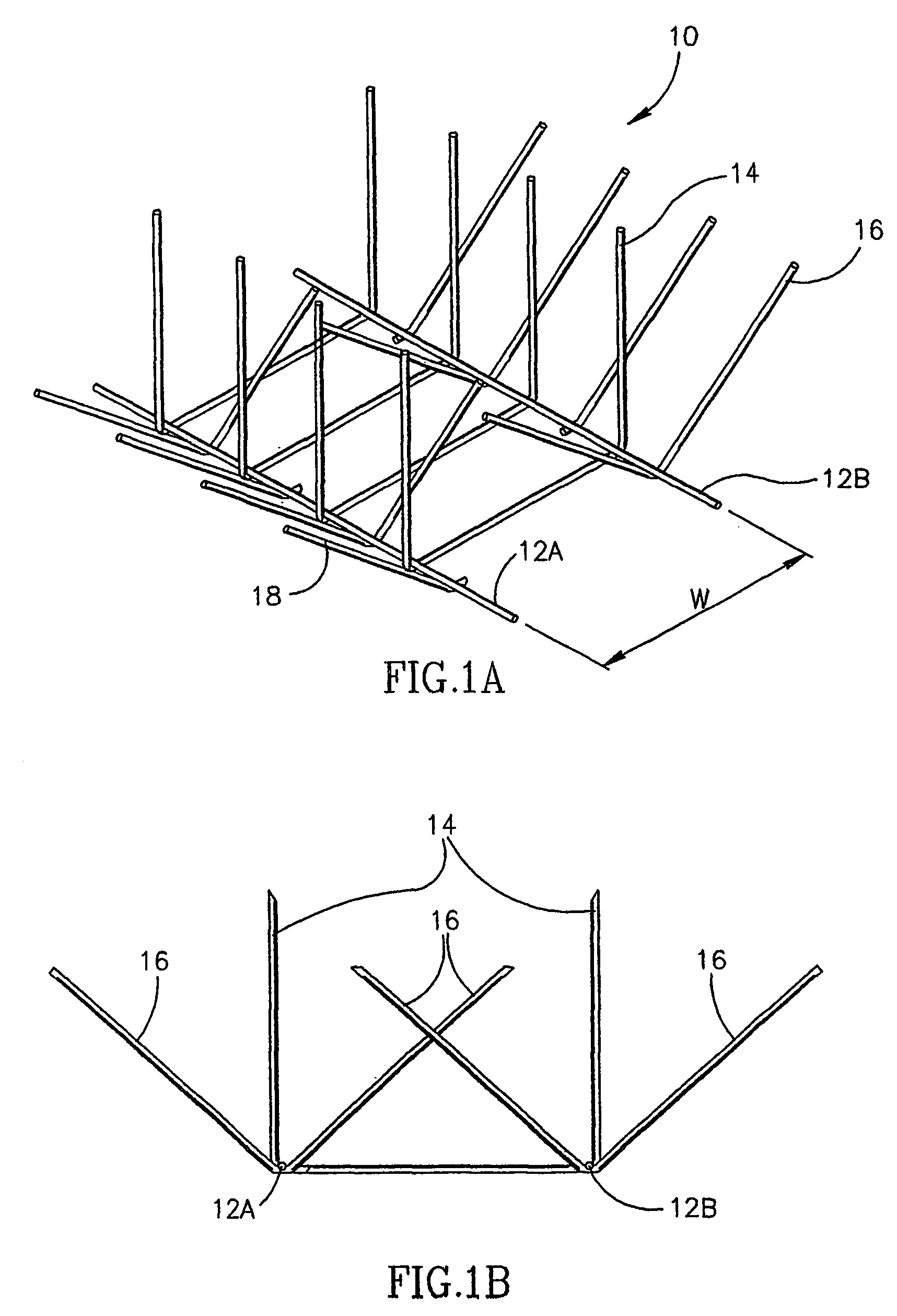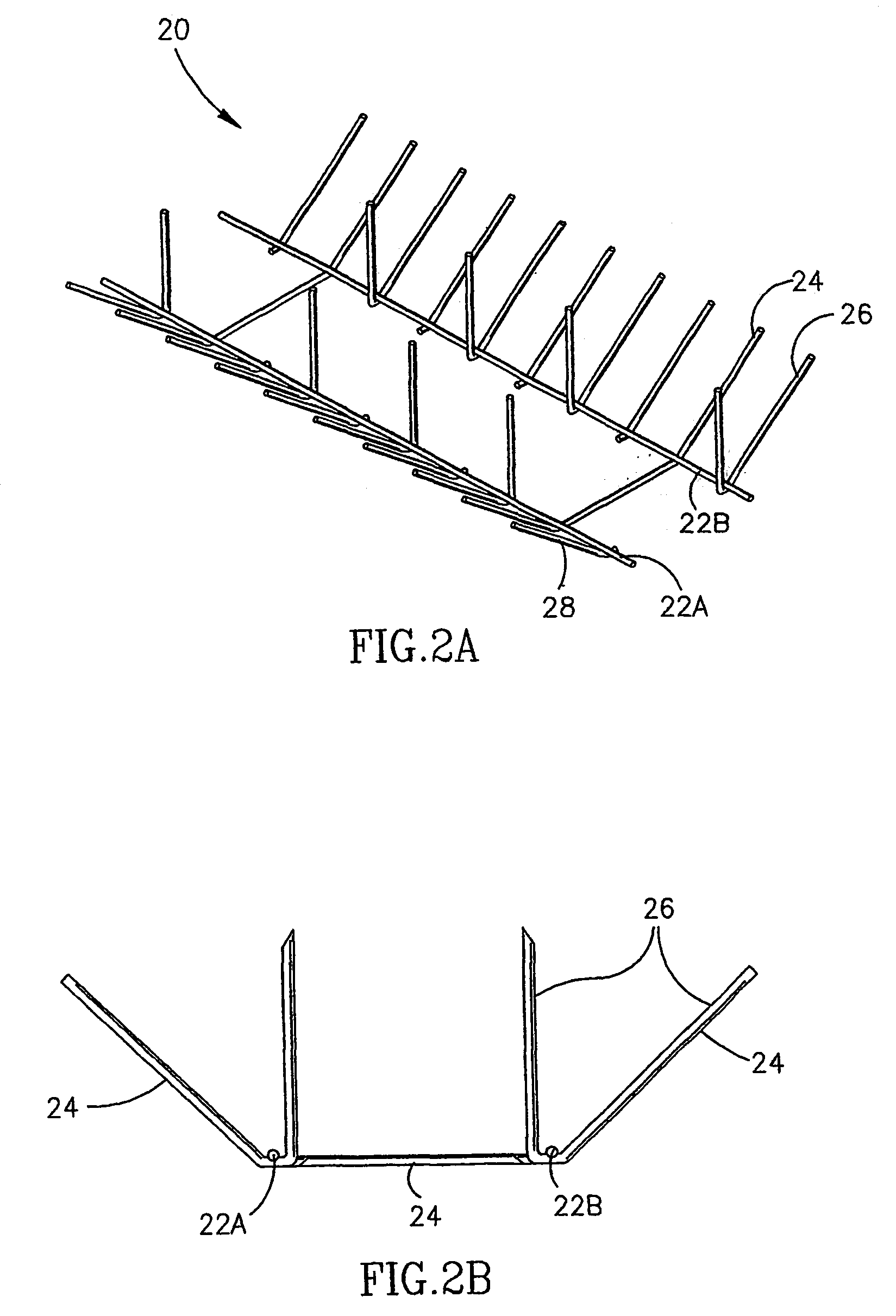Anti-bird roosting device
a technology of anti-birds and roosters, which is applied in the field of anti-bird roosting devices, can solve the problems of unbalanced rings, less effective configuration, and high production cost of devices
- Summary
- Abstract
- Description
- Claims
- Application Information
AI Technical Summary
Benefits of technology
Problems solved by technology
Method used
Image
Examples
Embodiment Construction
[0052]Referring now to FIG. 1A, there is shown a perspective view of the preferred embodiment of a lightweight, easily mounted and easily configured anti-bird roosting device 10, constructed in accordance with the principles of the present invention. The device 10 comprises a plurality of base-member elements 12a–b, which run parallel, one with the other, and a plurality of top-member spike elements, fabricated as several variant forms, shown in FIGS. 1A–1B. Hereafter, the term “variant” will be used to indicate an alternate form of the spike element, using the same reference number.
[0053]In FIG. 1A, top-member spike element variants 14 connect the base-member elements, one to another. The spikes of this top-element variant project vertically, in this embodiment. Spike element variants 16 and 18 are each bent into an angular form. In variant 16, both arms are equal in length, one arm projects inwardly and one arm projects outwardly. In variant 18, one arm is very short, essentially ...
PUM
 Login to View More
Login to View More Abstract
Description
Claims
Application Information
 Login to View More
Login to View More - R&D
- Intellectual Property
- Life Sciences
- Materials
- Tech Scout
- Unparalleled Data Quality
- Higher Quality Content
- 60% Fewer Hallucinations
Browse by: Latest US Patents, China's latest patents, Technical Efficacy Thesaurus, Application Domain, Technology Topic, Popular Technical Reports.
© 2025 PatSnap. All rights reserved.Legal|Privacy policy|Modern Slavery Act Transparency Statement|Sitemap|About US| Contact US: help@patsnap.com



